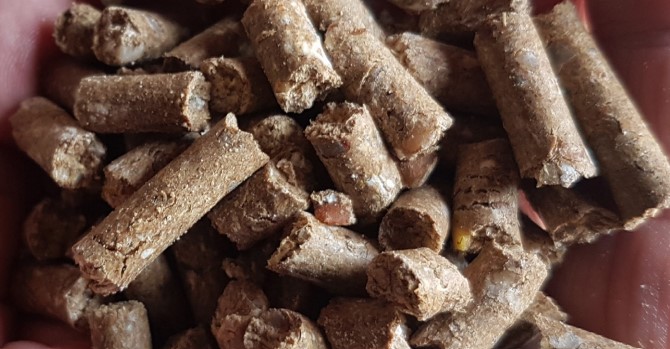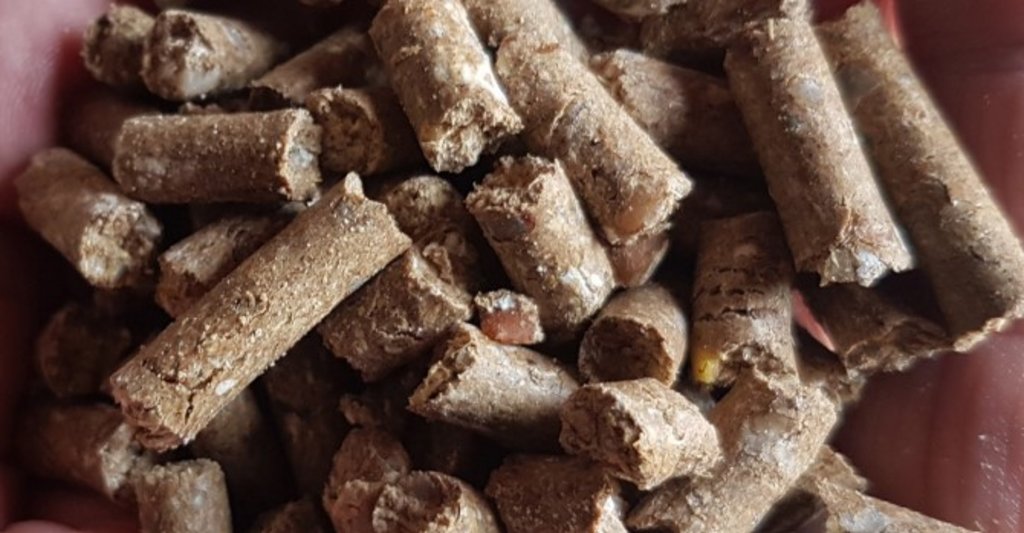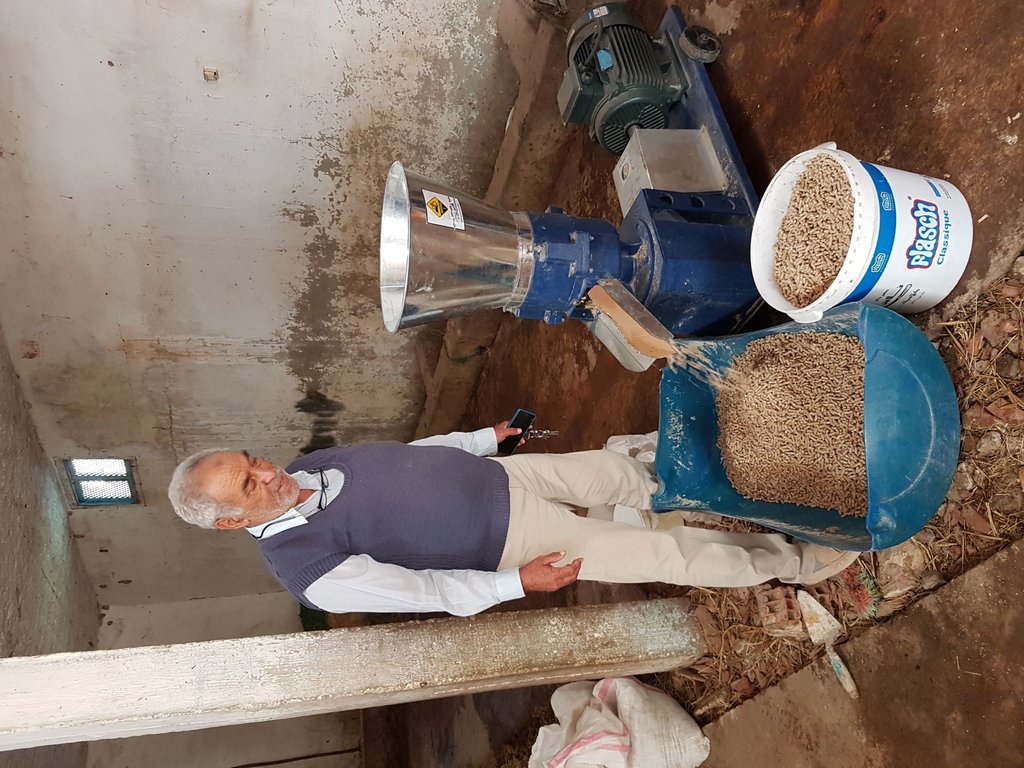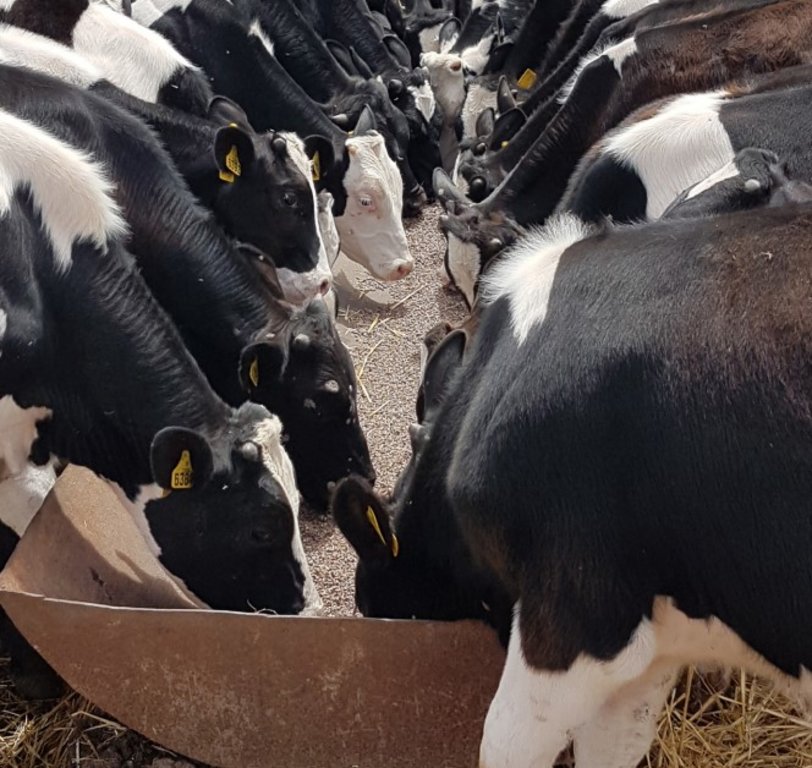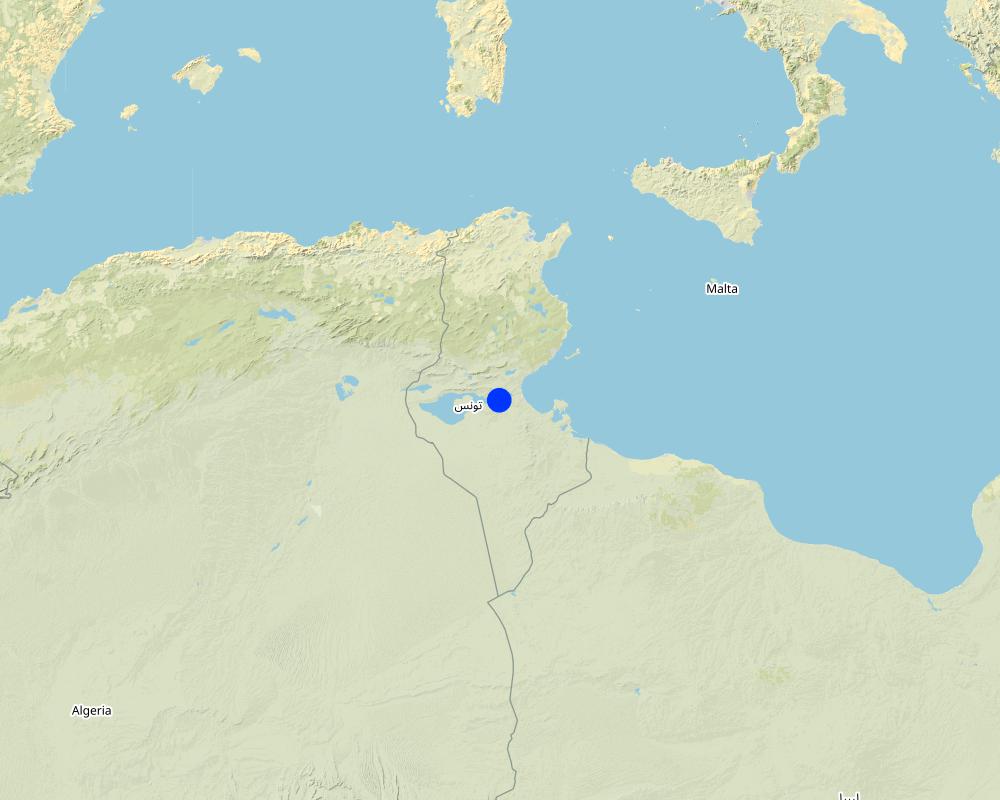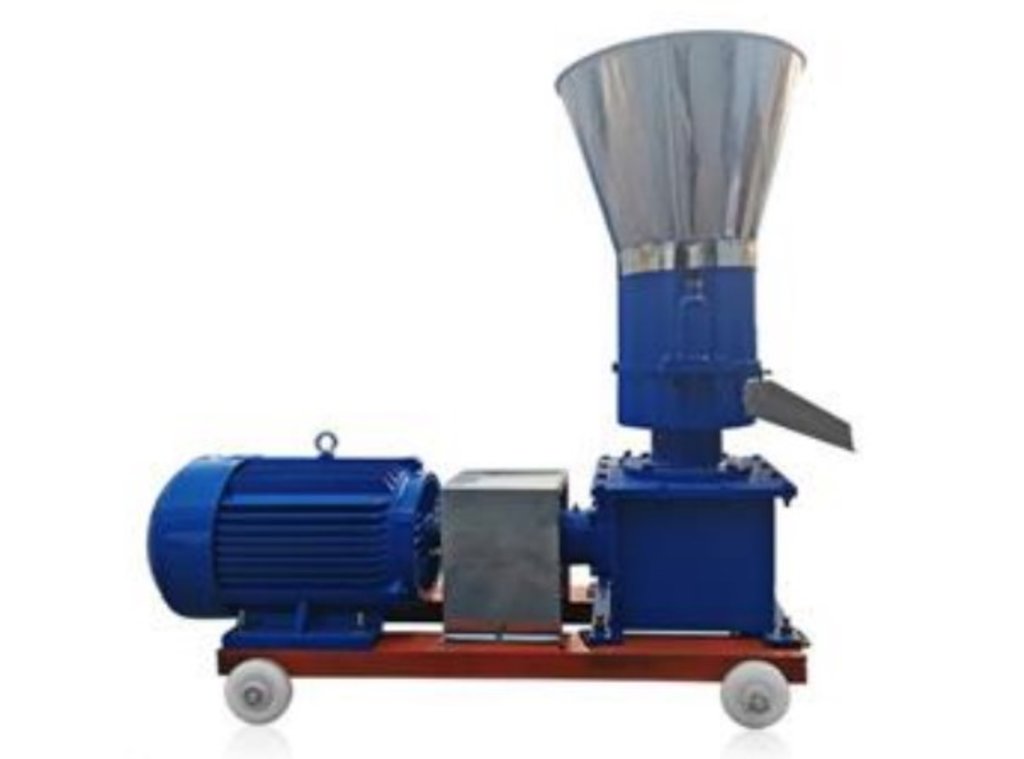Small-Scale Nutrient-Dense Pellet Production [突尼斯]
- 创建:
- 更新:
- 编制者: Joren Verbist
- 编辑者: –
- 审查者: William Critchley, Rima Mekdaschi Studer
technologies_6486 - 突尼斯
查看章节
全部展开 全部收起1. 一般信息
1.2 参与该技术评估和文件编制的资源人员和机构的联系方式
关键资源人
Agricultural Innovation Specialist:
Rudiger Udo
International Center of Agriculture Research in the Dry Areas (ICARDA)
突尼斯
Agricultural and Resource Economist:
Dhehibi Boubaker
International Center of Agriculture Research in the Dry Areas (ICARDA)
突尼斯
Forage Specialist:
El Ayed Monia
突尼斯
Forage Specialist:
Zaiem Anis
突尼斯
Economics and Participatory Methods:
Idoudi Zied
International Center of Agriculture Research in the Dry Areas (ICARDA)
突尼斯
Agricultural Economist:
Frija Aymen
International Center of Agriculture Research in the Dry Areas (ICARDA)
突尼斯
有助于对技术进行记录/评估的项目名称(如相关)
ICARDA Institutional Knowledge Management Initiative有助于对技术进行记录/评估的机构名称(如相关)
International Center for Agricultural Research in the Dry Areas (ICARDA) - 黎巴嫩1.3 关于使用通过WOCAT记录的数据的条件
编制者和关键资源人员接受有关使用通过WOCAT记录数据的条件。:
是
1.4 所述技术的可持续性声明
这里所描述的技术在土地退化方面是否存在问题,导致无法被认为是一种可持续的土地管理技术?:
否
1.5 参考关于SLM方法(使用WOCAT记录的SLM方法)的调查问卷
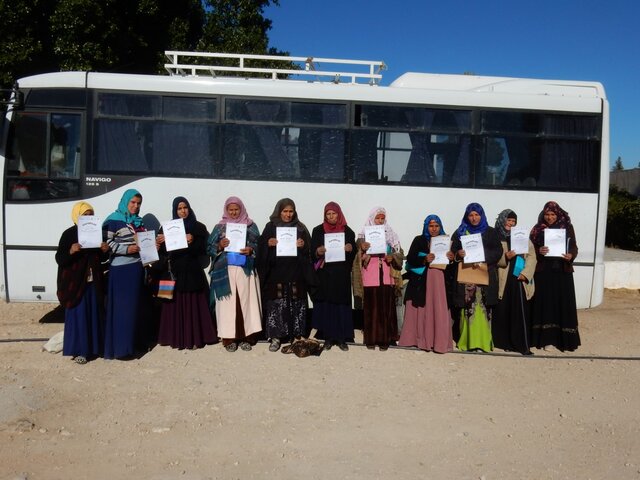
Lessons learned from the "Mind the Gap" project: … [突尼斯]
The “Mind the Gap” project researched the adoption gap between agricultural research and women and men farmers. Its objective was to determine most effective and cost-efficient technology transfer strategies and give recommendations to national extension institutes and development partners to adapt their scaling strategy
- 编制者: Joren Verbist
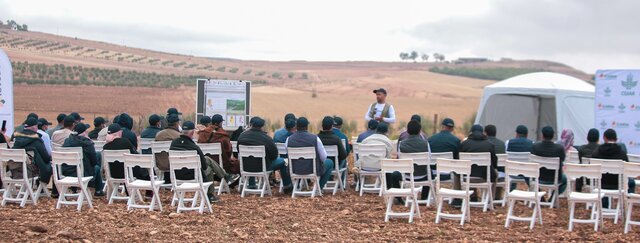
The 4-Wheels Approach for sustainable scaling [突尼斯]
The 4-Wheels Approach addresses the challenge of slow adoption of agricultural innovations among smallholder farmers by establishing Knowledge Hubs and partnerships with diverse stakeholders. The focus is on income-generating technologies and essential factors behind successful scaling up of innovations, ultimately driving agricultural modernization and sustainability.
- 编制者: Joren Verbist
2. SLM技术的说明
2.1 技术简介
技术定义:
Compressing agro-industrial by-products produces nutrient-dense livestock feed pellets that can compete with expensive and imported alternatives. This innovation consists of a small-scale compressor or "pelletizer" and formulae to create feed pellets of sufficient quality with locally available inputs.
2.2 技术的详细说明
说明:
In Tunisia, there are many agropastoralists who are dependent on expensive and imported feed pellets to improve livestock quality and to supplement feed shortages. Risks of relative shortages are likely to increase due to climate change. Simultaneously there are many discarded by-products from (local) agrofood supply chains such as olive cakes, date kernels, and downgraded dates, which contain good levels of nutrients. ICARDA saw an opportunity and, together with local partners, a machine was imported that is able to compress nutritious by-products into pellets. In addition to the machine, ICARDA and OEP experimented with feasible inputs and different ratios, considering local availability as well. It achieved highly dense and nutritious feed pellets from local available inputs, with similar quality to the imported pellets. There are currently two pelletizers on the market, a large model with a maximum capacity of 500 kilograms of pellets per hour, and a more affordable small pelletizer producing 125 kilogram per hour. Four formulae are recommended (see section 4.1). Two have olive cake as the main ingredient and the other two have date palm by-products as the key input. All formulae have an average protein content of 17% which is higher than imported pellets. The benefits include:
-Possibility of overcoming periods of fodder shortages
-Less dependence on expensive imports and price volatility
-Source of nutritious feed and improving livestock quality while reduced feeding costs
-Less pressure on grazing land and thereby reducing land degradation
-Joint purchase and use of a pelletizer by a farmer organization, improves social cohesion
-The pellets generate income and employment for the farmer organization
However the land users have experience challenges when acquiring permits for pellet production and electricity. In addition, there may be by-products supply constraints.
Information and data presented is partly made available through the projects “CRP livestock “Feed and Forages”” funded by CGIAR, and “SWC@scale” funded by GIZ. Projects were managed by the International Center for Agricultural Research in the Dry Areas (ICARDA) and implemented in Tunisia in collaboration with the Livestock and Pasture Office (OEP). Thus far, pelletizers have been made available by the CIGAR Research Program on Livestock (3 large and 2 small) and the German Organization for International Cooperation (GIZ) (a large and 2 small).
2.3 技术照片
2.5 已应用该技术的、本评估所涵盖的国家/地区/地点
国家:
突尼斯
具体说明该技术的分布:
- 适用于特定场所/集中在较小区域
技术现场是否位于永久保护区?:
否
Map
×2.6 实施日期
注明实施年份:
2019
2.7 技术介绍
详细说明该技术是如何引入的:
- 在实验/研究期间
- 通过项目/外部干预
3. SLM技术的分类
3.1 该技术的主要目的
- 改良生产
- 减少、预防、恢复土地退化
- 适应气候变化/极端天气及其影响
- 创造有益的经济影响
- 创造有益的社会影响
3.2 应用该技术的当前土地利用类型
同一土地单元内混合使用的土地::
是
具体说明混合土地使用(作物/放牧/树木):
- 农牧业(包括农牧结合)

农田
- 一年一作
年作 - 具体指明作物:
- 谷类 - 大麦
采用间作制度了吗?:
否
采用轮作制度了吗?:
否

牧场
粗放式放牧:
- 半游牧畜牧业
集约放牧/饲料生产:
- 收割和携带/零放牧
动物类型:
- cattle - dairy and beef (e.g. zebu)
- 山羊
- 绵羊
3.3 由于技术的实施,土地使用是否发生了变化?
由于技术的实施,土地使用是否发生了变化?:
- 否(继续问题3.4)
3.4 供水
该技术所应用土地的供水:
- 混合雨水灌溉
3.5 该技术所属的SLM组
- 畜牧业和牧场管理
- 农畜综合管理
- 收割后的措施
3.6 包含该技术的可持续土地管理措施

其它措施
具体说明:
The use of small scale machinery to convert by-products into feed pellets for livestock
3.7 该技术强调的主要土地退化类型

物理性土壤退化
- Pu:由于其他活动而导致生物生产功能的丧失

其它
具体说明:
By using by-products it reduces the pressure of waste on the environment
注释:
Degradation by overgrazing
3.8 防止、减少或恢复土地退化
具体数量名该技术与土地退化有关的目标:
- 减少土地退化
- 适应土地退化
注释:
When land degradation reduces yields, feel pellets are able to compensate for this. In addition, the alternative of feed by pellets might reduce the pressure on the land for grazing, potentially preventing overgrazing.
4. 技术规范、实施活动、投入和成本
4.1 该技术的技术图纸
技术规范(与技术图纸相关):
Input composition for different formulas
作者:
Rudiger, U., El Ayed, M., Idoudi, Z., Frija, A., Nefzaoui, A. and Gharsi, M. 2021. Nutrient-dense livestock feed pellets manufactured in Tunisia can compete with imported feed concentrates. Business Model Brief. Nairobi, Kenya: ILRI
日期:
2021
技术规范(与技术图纸相关):
Nutritional value and costs of four pellet formulae compared to imported concentrates and lucerne pellets.
作者:
Rudiger, U., El Ayed, M., Idoudi, Z., Frija, A., Nefzaoui, A. and Gharsi, M. 2021. Nutrient-dense livestock feed pellets manufactured in Tunisia can compete with imported feed concentrates. Business Model Brief. Nairobi, Kenya: ILRI
技术规范(与技术图纸相关):
Large Pelletizer:
-Production capacity < 500 kilogram per hour
-Power usage = 5 kilowatt per hours
-Voltage level = 380 volts
-Size = 930 by 550 by 1440 in millimeters
-Weight = 320 kilogram
作者:
Juhaina cooperation
4.2 有关投入和成本计算的一般信息
具体说明成本和投入是如何计算的:
- 每个技术单元
指定单位:
1 ton of Pellets
其它/国家货币(具体说明):
Tunisian Dinar
如相关,注明美元与当地货币的汇率(例如1美元=79.9巴西雷亚尔):1美元=:
3.0
注明雇用劳工的每日平均工资成本:
25
4.3 技术建立活动
| 活动 | 时间(季度) | |
|---|---|---|
| 1. | Purchase Machine |
4.4 技术建立所需要的费用和投入
| 对投入进行具体说明 | 单位 | 数量 | 单位成本 | 每项投入的总成本 | 土地使用者承担的成本% | |
|---|---|---|---|---|---|---|
| 设备 | Large Pelletizer | 1.0 | 9000.0 | 9000.0 | ||
| 技术建立所需总成本 | 9000.0 | |||||
| 技术建立总成本,美元 | 3000.0 | |||||
4.5 维护/经常性活动
| 活动 | 时间/频率 | |
|---|---|---|
| 1. | Gather raw feed materials for inputs | |
| 2. | Compress inputs into pellets using the pelletizer | |
| 3. | Feed the pellets to livestock |
4.6 维护/经常性活动所需要的费用和投入(每年)
| 对投入进行具体说明 | 单位 | 数量 | 单位成本 | 每项投入的总成本 | 土地使用者承担的成本% | |
|---|---|---|---|---|---|---|
| 劳动力 | Using the pelletizer | Person-hour | 2.0 | 3.0 | 6.0 | |
| 植物材料 | Olive cake | Kilogram | 340.0 | 0.07 | 23.8 | |
| 植物材料 | wheat bran | Kilogram | 320.0 | 0.25 | 80.0 | |
| 植物材料 | Faba Beans | Kilogram | 300.0 | 1.5 | 450.0 | |
| 植物材料 | Minerals | Kilogram | 40.0 | 0.44 | 17.6 | |
| 其它 | Electricity | Kilo watt | 30.0 | 0.3 | 9.0 | |
| 技术维护所需总成本 | 586.4 | |||||
| 技术维护总成本,美元 | 195.47 | |||||
5. 自然和人文环境
5.1 气候
年降雨量
- < 250毫米
- 251-500毫米
- 501-750毫米
- 751-1,000毫米
- 1,001-1,500毫米
- 1,501-2,000毫米
- 2,001-3,000毫米
- 3,001-4,000毫米
- > 4,000毫米
农业气候带
- 半干旱
This innovation can be implemented in many different environments.
5.2 地形
平均坡度:
- 水平(0-2%)
- 缓降(3-5%)
- 平缓(6-10%)
- 滚坡(11-15%)
- 崎岖(16-30%)
- 陡峭(31-60%)
- 非常陡峭(>60%)
地形:
- 高原/平原
- 山脊
- 山坡
- 山地斜坡
- 麓坡
- 谷底
垂直分布带:
- 0-100 m a.s.l.
- 101-500 m a.s.l.
- 501-1,000 m a.s.l.
- 1,001-1,500 m a.s.l.
- 1,501-2,000 m a.s.l.
- 2,001-2,500 m a.s.l.
- 2,501-3,000 m a.s.l.
- 3,001-4,000 m a.s.l.
- > 4,000 m a.s.l.
说明该技术是否专门应用于:
- 不相关
关于地形的注释和进一步规范:
This innovation can be implemented in many different environments.
5.3 土壤
平均土层深度:
- 非常浅(0-20厘米)
- 浅(21-50厘米)
- 中等深度(51-80厘米)
- 深(81-120厘米)
- 非常深(> 120厘米)
土壤质地(表土):
- 中粒(壤土、粉土)
土壤质地(地表以下> 20厘米):
- 粗粒/轻(砂质)
- 中粒(壤土、粉土)
表土有机质:
- 中(1-3%)
- 低(<1%)
如有可能,附上完整的土壤描述或具体说明可用的信息,例如土壤类型、土壤酸碱度、阳离子交换能力、氮、盐度等。:
This innovation can be implemented in many different environments.
5.4 水资源可用性和质量
地下水位表:
5-50米
地表水的可用性:
匮乏/没有
水质(未处理):
不良饮用水(需要处理)
水质请参考::
地下水
水的盐度有问题吗?:
是
该区域正在发生洪水吗?:
否
关于水质和水量的注释和进一步规范:
This innovation can be implemented in many different environments.
5.5 生物多样性
物种多样性:
- 低
栖息地多样性:
- 低
关于生物多样性的注释和进一步规范:
This innovation can be implemented in many different environments.
5.6 应用该技术的土地使用者的特征
定栖或游牧:
- 定栖的
- 半游牧的
生产系统的市场定位:
- 混合(生计/商业)
非农收入:
- 收入的10-50%
相对财富水平:
- 贫瘠
- 平均水平
个人或集体:
- 个人/家庭
- 团体/社区
机械化水平:
- 机械化/电动
性别:
- 女人
- 男人
土地使用者的年龄:
- 中年人
- 老年人
5.7 应用该技术的土地使用者使用的平均土地面积
- < 0.5 公顷
- 0.5-1 公顷
- 1-2 公顷
- 2-5公顷
- 5-15公顷
- 15-50公顷
- 50-100公顷
- 100-500公顷
- 500-1,000公顷
- 1,000-10,000公顷
- > 10,000公顷
这被认为是小规模、中规模还是大规模的(参照当地实际情况)?:
- 小规模的
5.8 土地所有权、土地使用权和水使用权
土地所有权:
- 个人,未命名
- 个人,有命名
土地使用权:
- 个人
用水权:
- 社区(有组织)
- 个人
土地使用权是否基于传统的法律制度?:
是
具体说明:
Land use rights in Tunisia have a long history with religious (e.g. melk) influences and French influences. This resulted in that currently most lands are private owned or state owned
5.9 进入服务和基础设施的通道
健康:
- 贫瘠
- 适度的
- 好
教育:
- 贫瘠
- 适度的
- 好
技术援助:
- 贫瘠
- 适度的
- 好
就业(例如非农):
- 贫瘠
- 适度的
- 好
市场:
- 贫瘠
- 适度的
- 好
能源:
- 贫瘠
- 适度的
- 好
道路和交通:
- 贫瘠
- 适度的
- 好
饮用水和卫生设施:
- 贫瘠
- 适度的
- 好
金融服务:
- 贫瘠
- 适度的
- 好
6. 影响和结论性说明
6.1 该技术的现场影响
社会经济效应
生产
饲料生产
注释/具体说明:
Pellets allow for better storage of fodder and thus less loss of fodder, translating into improved production. Additionally, inputs that cannot be used as fodder directly, can now be processed by the pelletizer into fodder, also improving the production.
生产故障风险
注释/具体说明:
Since fodder can be better stored, farmers are better able to overcome failures. Additionally, by using the alternative inputs, feed production is diversified.
产品多样性
注释/具体说明:
Other inputs are used hence production is diversified.
收入和成本
农业投入费用
注释/具体说明:
Less cost on commercially produced pellets, and using the comparative advantage of this technology.
农业收入
注释/具体说明:
The reduced cost translate improved in the increased farm income.
收入来源的多样性
注释/具体说明:
Farmers may sell their own produced pellets, diversifying their income. In addition, farmers are now not solely dependent on their land as they can also use other inputs.
经济差异
注释/具体说明:
Marginalized farmers have now comparative advantage.
社会文化影响
食品安全/自给自足
注释/具体说明:
They can produce their own pellets, thus less dependent on imports.
6.2 该技术的场外影响已经显现
pressure from by-products on the environment
注释/具体说明:
By making use of the by-products there is less pressure of them on the environment.
6.3 技术对渐变气候以及与气候相关的极端情况/灾害的暴露和敏感性(土地使用者认为的极端情况/灾害)
气候有关的极端情况(灾害)
气候灾害
| 该技术是如何应对的? | |
|---|---|
| 干旱 | 好 |
6.4 成本效益分析
技术收益与技术建立成本相比如何(从土地使用者的角度看)?
短期回报:
积极
长期回报:
非常积极
技术收益与技术维护成本/经常性成本相比如何(从土地使用者的角度看)?
短期回报:
非常积极
长期回报:
非常积极
6.5 技术采用
- 1-10%
在所有采用这项技术的人当中,有多少人是自发的,即未获得任何物质奖励/付款?:
- 0-10%
6.6 适应
最近是否对该技术进行了修改以适应不断变化的条件?:
否
6.7 该技术的优点/长处/机会
| 土地使用者眼中的长处/优势/机会 |
|---|
| Pellets can be easily stored, and then be used in periods of feed shortages |
| Pellets are made from local and cheap inputs |
| The pellets have good nutritional value, similar to the more expensive and imported pellets |
| The pelletizer is easy to use |
| 编制者或其他关键资源人员认为的长处/优势/机会 |
|---|
| Inputs can come from by-products that would otherwise be wasted |
| Farmers are less dependent on expensive feed imports and their volatile prices |
| Pellets being an alternative feed source, reduces the pressure on grazing land |
| The pelletizer and produced pellets improve the value chain on a local level |
| When the pelleizer are used in a farmer organization context, it improves the cohesion within this organization. And it provides opportunity for further investment because pellets generate additional income. |
6.8 技术的弱点/缺点/风险及其克服方法
| 土地使用者认为的弱点/缺点/风险 | 如何克服它们? |
|---|---|
| Requires an initial investment |
Improve funding schemes with banks or government to support these investments. Farmers can purchase the machine as cooperative. |
| Difficult to arrange permits from the government | Developing an approach by extension workers, who can then help the farmers |
| Difficult to get a 380 volt power supply from electricity companies | Developing an approach by extension workers, who can then help the farmers |
| 编制者或其他关键资源人员认为的弱点/缺点/风险 | 如何克服它们? |
|---|---|
| By-products as inputs, might be difficult to come by if the farmers lacks the right network | Set-up a network to connect farmers with producers of suitable by-products |
| By-products are often only periodically available | Experiment with different inputs that are available in other period, to ensure whole-year availability |
7. 参考和链接
7.1 信息的方法/来源
- 实地考察、实地调查
- 与SLM专业人员/专家的访谈
- 根据报告和其他现有文档进行编译
(现场)数据是什么时候汇编的?:
2022
7.2 参考可用出版物
标题、作者、年份、ISBN:
Boubaker Dhehibi, Jebali Oussama, Aymen Frija, Udo Rudiger, Hassen Ouerghemmi, Zied Idoudi, Mourad Rekik, Monia Elayed, Anis Zaiem, Nizar Moujahed. (26/10/2022). Profitability of Manufactured Feed Pellets for Small-Scale Crop-Livestock Farmers in Tunisia. Beirut, Lebanon: International Center for Agricultural Research in the Dry Areas (ICARDA).
7.3 链接到网络上的相关信息
标题/说明:
Udo Rudiger, Monia Aouinti. (2/6/2021). Locally manufactured feed pellets: Reducing chronic feed deficits and production costs/Les bouchons alimentaires: Réduire les déficits alimentaires chroniques et les coûts de
URL:
https://hdl.handle.net/20.500.11766/10159
链接和模块
全部展开 全部收起链接

Lessons learned from the "Mind the Gap" project: … [突尼斯]
The “Mind the Gap” project researched the adoption gap between agricultural research and women and men farmers. Its objective was to determine most effective and cost-efficient technology transfer strategies and give recommendations to national extension institutes and development partners to adapt their scaling strategy
- 编制者: Joren Verbist

The 4-Wheels Approach for sustainable scaling [突尼斯]
The 4-Wheels Approach addresses the challenge of slow adoption of agricultural innovations among smallholder farmers by establishing Knowledge Hubs and partnerships with diverse stakeholders. The focus is on income-generating technologies and essential factors behind successful scaling up of innovations, ultimately driving agricultural modernization and sustainability.
- 编制者: Joren Verbist
模块
无模块


